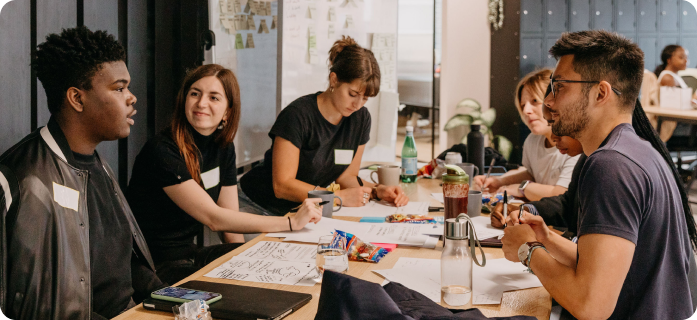Transform Your Career Trajectory: How Service Design Courses Can Help You Achieve Your Goals
Service design roles are becoming more and more important in today’s competitive landscape as organisations from various industries start to think about the importance of having clear processes and experiences. There is a constant need for processes that aim to improve the quality of services that customers receive.
Service designers work on projects that enhance the customer experience by considering all aspects of the customer journey, including interactions with various touchpoints, from digital products, online platforms, and physical spaces. The goal of service design is to create a seamless and enjoyable experience for all end users, while meeting core business objectives.
A Day in the Life of a Service Designer
A typical day in the life of a service designer can vary depending on the project they are working on, but some tasks that a service designer may undertake include:
- Conducting research to understand the customer’s needs and preferences
- Developing and prototyping solutions that will enhance the customer experience
- Collaborating with a team of designers, stakeholders, and clients to ensure the project’s success
- Presenting findings and recommendations to key stakeholders
- Creating a service blueprint that outlines the customer journey and identifies areas for improvement
Who Can Become a Service Designer?
Service design is an interdisciplinary field that requires a combination of skills and knowledge from various backgrounds, including:
- Design: A background in design is helpful, but not necessary. Service design is more about the process than the aesthetics of design.
- Business: Service designers need to understand the business goals and the impact of the work on the organisation.
- Social Impact: Service designers need to understand the human aspect of the project and the end user’s needs and desires.
What is important to become a service designer is a willingness to learn, a passion for critical problem-solving, and an interest in improving the holistic customer experience. Many people who move into service design also bring transferable skills with them. Here are some additional skills and traits that can be beneficial for service designers:
- Strong communication skills to collaborate with team members and stakeholders
- Empathy and a human-centred approach to design thinking
- Ability to think strategically and solve complex problems
- Flexibility to adapt to changes in project requirements
Why can a course help?
Taking service design courses can help provide foundational skills, along with understanding of key methods and tools, in order to succeed as a service designer.
Here are some benefits of taking a service design course:
- An immersive service design course will teach you the principles and processes of design thinking and service design. You’ll learn about user research, prototyping, testing, and implementation.
- Well designed courses often involve working on real-life projects, giving you hands-on experience in the field and experience of working with real stakeholders
- Completing a course can help you build a portfolio of work that showcases your skills and knowledge during the interview process.
- Good course providers can share opportunities to network with industry professionals which can be helpful in securing your first job in the field.
- Service design is an evolving field, and taking a course can help you stay up-to-date with the latest trends, industry tools, and often used techniques.
If you are keen to explore moving into a service design role in the near future, do not hesitate to look into service design courses – there are various benefits that will ultimately help prepare you for long lasting career.



